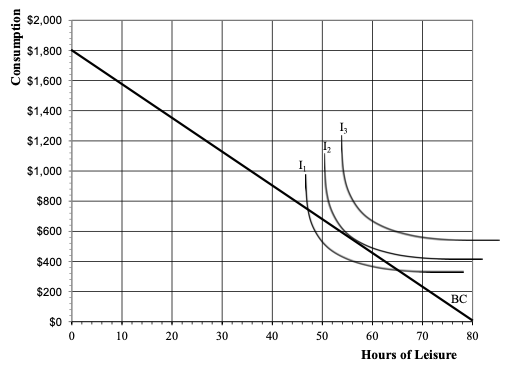Question
Q: Dee and Charlie are both bartenders in the Philadelphia labor market. When the wage rate increases from $10 per hour to $15 per hour
Q: Dee and Charlie are both bartenders in the Philadelphia labor market. When the wage rate increases from $10 per hour to $15 per hour Dee responds by working more hours and Charlie responds by working less hours. Which of the following must true?
i. For Dee the income effect of the wage increase was greater than the substitution effect of the wage increase.
ii. For Dee the substitution effect of the wage increase was greater than the income effect of the wage increase.
iii. For Charlie the income effect of the wage increase was greater than the substitution effect of the wage increase.
iv. For Charlie the substitution effect of the wage increase was greater than the income effect of the wage increase.
- Both ii. and iii.
- Both ii. and iv.
- Both i. and iii.
- Both i. and iv.
Q: The graph below shows a worker's budget constraint. The worker is paid a straight hourly wage. Use the graph to answer questions 1 to 4.

Step by Step Solution
There are 3 Steps involved in it
Step: 1

Get Instant Access to Expert-Tailored Solutions
See step-by-step solutions with expert insights and AI powered tools for academic success
Step: 2

Step: 3

Ace Your Homework with AI
Get the answers you need in no time with our AI-driven, step-by-step assistance
Get Started


